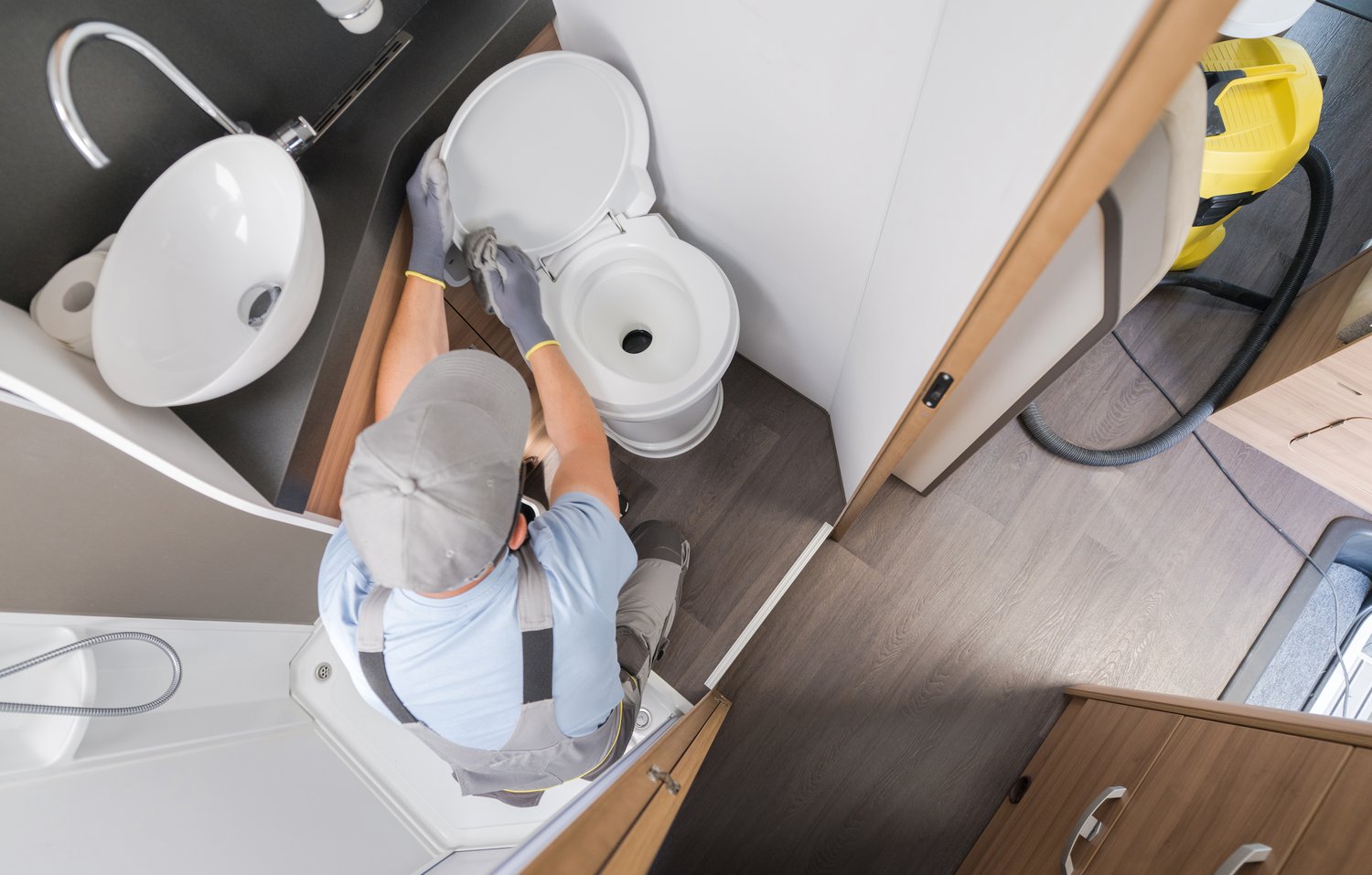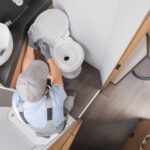Imagine hearing the incessant sound of running water. This isn’t just an annoying household distraction; it signals a loss of water and money due to a running toilet. Delve into the core of this common yet often overlooked issue, unravel its complexities, and transform this nuisance into an easy fix that ensures efficiency and peace of mind.
- Unlock the secrets of a toilet’s internal workings by understanding components like the flapper and fill valve, crucial for resolving running issues.
- Identify and diagnose the telltale signs of a malfunctioning toilet before small problems escalate into costly repairs.
- Explore six simple and effective solutions to the most common toilet-running issues, empowering you to tackle them head-on with confidence.
- Discover proactive maintenance strategies and tool recommendations to keep your plumbing system in pristine condition, preventing future hitches.
This article equips you with practical solutions and preventive insights that will save you both water and expenses, all while maintaining your home’s plumbing efficiency. Dive in and enhance your DIY skills while ensuring your toilet runs smoothly.
6 Frequent Issues and Their Simple Solutions for a Running Toilet
A running toilet can significantly impact your water usage, leading to higher bills and potential damage over time. Let’s delve into six common causes of a running toilet and the simple solutions to fix them.
1. Faulty Flapper
The flapper is a crucial component that seals water in the tank. If it’s not sealing properly, it can cause continuous water flow. Solution: Check if the flapper is worn or misaligned and replace it if necessary. Adjust the chain length for proper seating.
2. Inefficient Fill Valve
The fill valve controls the water level in the tank. A faulty valve can cause overflow or inadequate water refilling. Solution: Adjust the fill valve float to ensure the tank fills to the appropriate level. If damaged, installing a new valve might be necessary.
3. Overflow Tube Problems
If the water level is too high, it will continuously drain into the overflow tube. Solution: Adjust the float height to lower the water level, ensuring it’s below the overflow tube opening.
4. Malfunctioning Float
A misadjusted float can lead to improper water levels in the tank. Solution: Check the float’s adjustment. Either raise or lower it to balance the water level correctly.
5. Leaky Tank Bolts
Worn washers on the tank bolts can cause leakage and water wastage. Solution: Inspect the bolts and washers, tightening or replacing them if they’re compromised to prevent leakage.
6. Cracked Float Ball
A cracked float ball can fill with water, impairing its functionality. Solution: Examine the float ball for cracks and replace it if needed to restore proper tank level control.
Preventive Measures: Avoid Future Running Toilets
Regular maintenance is key to preventing future toilet running issues, saving you time and money. Here are some effective preventive strategies to keep your toilet in optimal condition.
Regular Inspection
Schedule routine checks to ensure all components are functioning well. An early inspection can prevent small issues from evolving into costly repairs.
Upgrade to Efficient Components
Consider installing newer, more efficient parts, such as adjustable fill valves or high-efficiency flappers, to minimize the risk of running toilets.
Proper Cleaning
Regularly clean the toilet tank to prevent debris buildup, which can obstruct parts and cause malfunctions.
By following these preventive steps, you enhance the performance and lifespan of your toilet, ensuring it runs smoothly for years to come.
This content is optimized for SEO with the use of relevant keywords related to plumbing issues and solutions ensuring that readers can easily find it when searching for solutions to a running toilet.
Tools and Equipment Needed: Fixing a Running Toilet with Ease
When it comes to addressing the common issue of a running toilet, having the right tools and equipment on hand is pivotal. Preparedness not only makes the task simpler but also ensures that you can fix the problem efficiently without unnecessary trips to the hardware store.
Begin by gathering the basic plumbing tools, which are essential for almost any repair job. A set of adjustable wrenches is crucial for loosening nuts and connections. These versatile tools can adapt to different sizes, making them handy for various tasks.
Another indispensable tool is a flathead screwdriver. This tool often comes into play when adjusting the fill valve or replacing the flapper. Its simple design allows for precision without causing damage to delicate components.
A plumber’s tape is also useful to have. Despite its simplicity, this tape can help seal threads and prevent leaks, especially when reassembling parts of the toilet mechanism.
For more specialized requirements, consider acquiring a toilet tank repair kit. These kits are comprehensive, featuring essential components like flappers, fill valves, and gaskets. They enable you to replace faulty parts efficiently without having to buy each item separately.
A bucket and sponge should be part of your toolkit as well. Toilets can harbor excess water even when turned off, so having these items will help ensure a cleaner and tidier workspace as you complete your repairs.
Ultimately, being well-equipped is a pivotal step in managing home plumbing issues successfully. As you dive into fixing a running toilet, these tools will empower you to tackle the task with confidence and effectiveness.
Would you add any other tools to this list? Let us know your thoughts or share your experiences in the comments below!
Understanding the Basics: How to Fix a Running Toilet
Before diving into specific issues, it’s crucial to first understand the basic plumbing mechanics of how a toilet functions. Knowing the role of each component will equip you with the knowledge needed to tackle common issues effectively.
The flapper is a vital part in the toilet’s function, sitting at the bottom of the tank and controlling water release into the bowl. A properly functioning flapper ensures efficient flushing, preventing unnecessary water wastage.
Next, the float plays a key role in regulating water levels within the tank. As the water fills, the float rises, informing the fill valve to shut off when the optimal level is reached. If the float malfunctions, it often leads to a running toilet due to overflow.
The fill valve, another essential component, is responsible for refilling the tank after a flush. This mechanism controls water intake, making it crucial for maintaining appropriate water pressure and preventing continuous water flow.
By familiarizing yourself with these key components, you can easily identify issues and perform necessary plumbing repairs to ensure your toilet operates smoothly and efficiently.
Diagnosing Common Problems
To effectively fix a running toilet, it’s important to identify the signs of plumbing issues early. Detecting warning indicators can prevent more severe problems from developing.
Watch for continuous water flow, which often points to a malfunctioning flapper or float. This issue not only wastes water but can also increase your utility bills significantly.
Unusual noises emanating from the toilet, such as hissing or gurgling, are telltale signs something is amiss. These sounds might indicate that water is leaking from the tank into the bowl, often due to faulty components.
Additionally, inefficient flushing is a common problem, emphasizing the need for prompt intervention. If not addressed, improper flushing can lead to clogs and further damage to your plumbing system.
By understanding these common problems, you can take proactive steps to diagnose and repair your toilet, ensuring it functions properly and efficiently.
Frequently Asked Questions about Fixing a Running Toilet
What causes a toilet to run continuously?
A running toilet can be caused by a faulty flapper, a misadjusted fill valve, or issues with the float mechanism.
How do I stop my toilet from running?
Stopping a running toilet typically involves checking and potentially replacing the flapper, adjusting the fill valve, or adjusting the float.
Do I need special tools to fix a running toilet?
Basic tools like a screwdriver, wrench, and pliers are sufficient for most toilet repairs.
How often should toilet components be checked?
Annual inspections are recommended to ensure all parts function correctly and prevent running issues.
Can a running toilet increase my water bill?
Yes, a toilet that runs continuously can significantly increase your water bill over time.
Is fixing a running toilet a DIY task?
Yes, with the right guidance and tools, fixing a running toilet is a manageable DIY task for most homeowners.





